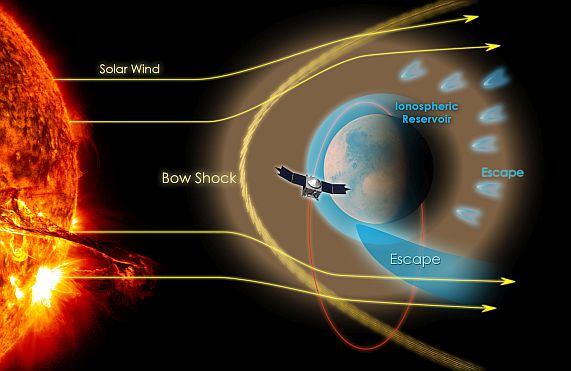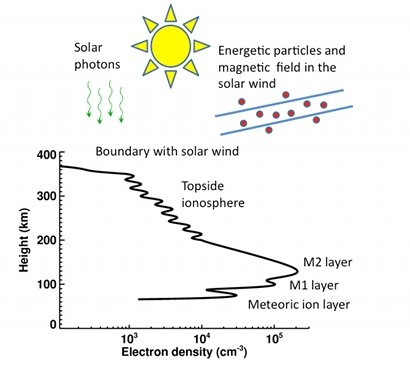Space environment around Mars
Martian interaction with the solar wind is fundamentally different than in the case of Earth, as it does not possess a global magnetic field. However, it has a conductive ionosphere, and the magnetic field induced therein due to the draping of the interplanetary magnetic field around the planet effectively prevents the solar wind from getting in its very vicinity. Additionally, the weak crustal magnetic fields may have localized effects further complicating the interaction. The dayside ionosphere of Mars is formed primarily due to the photoionization by incoming solar radiation. The main source of the nightside ionosphere is, apart from the plasma transport from the dayside, the ionization caused by precipitating energetic particles. It is significantly patchier and to a large extent controlled by a configuration of crustal magnetic fields.


We focus on the experimental analysis of the plasma and electromagnetic environment of Mars, using both in-situ measured and radar sounding data. A special attention is paid to characterizing the ionospheric electron densities and understanding the role played by the remnant crustal magnetic fields in the global interaction of the solar wind with the planet.
